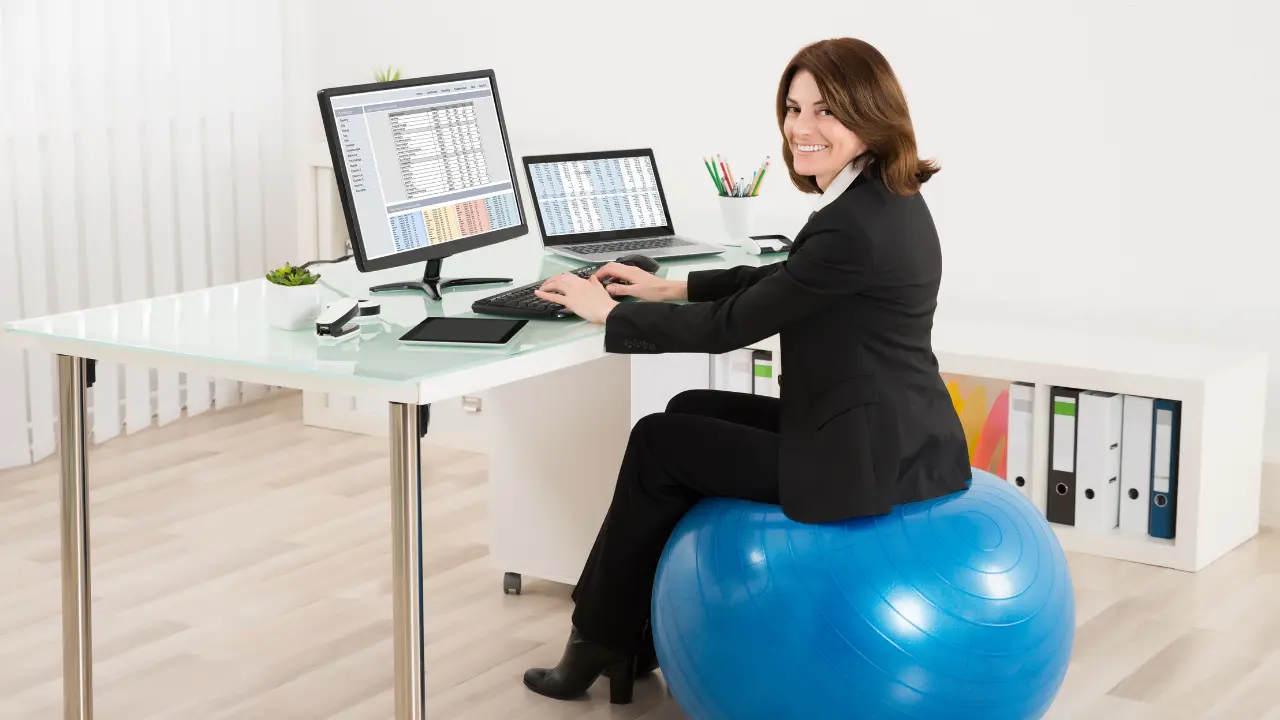Feeling that nagging pain in your neck or lower back? Your poor posture might be the silent culprit here. According to a recent survey, a significant 68.7% of employees struggle to maintain proper body posture throughout their daily routines. What may seem like brief moments of ease while lounging on the couch or hunching over a desk are, in fact, sedentary behaviors that can negatively impact your posture.
For hassle-free posture improvement, try these 5 useful techniques.
5 Things to Do to Improve Your Posture
Maintaining correct posture helps prevent musculoskeletal issues, reducing the risk of back and neck pain. Improve your posture to support your optimal organ function, enhance breathing capacity, and contribute to better blood circulation. Additionally, a healthy posture promotes a positive self-image, boosting confidence and overall well-being. Try these practices:
1. Stand straight
Stand up straight, keep your feet shoulder-width apart, and imagine a string pulling gently from the top of your head. Check your posture throughout the day, making sure that the invisible string is keeping you aligned. This visualization helps distribute your body weight evenly, reducing strain on your back and neck. It also promotes a sense of confidence and openness in your posture.
2. Take stretching breaks
Take short breaks every hour to stretch. To reduce tension, roll your shoulders forward and backward. It just takes a few minutes, so set a phone reminder to remind you to stretch.
Regular stretching prevents muscles from becoming stiff, improves blood circulation, maintains flexibility, reduces the risk of chronic pain or discomfort, and helps to improve your posture.
3. Set up a comfortable workspace
Adjust your work chair so your feet touch the ground and your knees form a 90-degree angle. Put your computer screen at eye level to avoid straining your neck. Get a pillow for your lower back for extra comfort and lumbar support. A comfortable workspace reduces the likelihood of poor posture caused by discomfort. Proper chair and monitor positioning ensures a more ergonomic environment, promoting good posture.
4. Strengthen your core muscles
Do exercises that strengthen your core like planks, leg raises, bicycle crunches, and seated Russian twists. These simple routines engage key abdominal muscles, helping to improve overall posture and support your spine. Aim for consistency, gradually increasing intensity, to build a stable and strong core. Make it a habit to do them while watching TV; it’s a good way to relax and get fit.
A strong core stabilizes your spine, enhancing overall posture. Practice these exercises daily to improve your posture. If you have doubts about which exercises to try or avoid, schedule a free consultation call with us, and let’s start your journey to a healthier life.
5. Take deep breaths
Take a moment each day to practice deep breathing, which helps to calm and loosen your muscles. Remember to be aware of your breath regularly, creating moments of peace in your busy day. This mindful breathing not only eases tension in your muscles but also helps you become more aware of your body, making it easier to maintain and improve your posture throughout the day. By making deep breaths a daily habit, you’re building a calm and balanced foundation for both your body and mind in your everyday life.
5 Things to Avoid to Improve Your Posture
Poor posture can give you headaches as well as back and neck pain. It can affect your muscles and spine over time, causing long-term problems. Include these 5 exercises in your program to maintain a straight back:
1. Avoid slouching
Make it a habit to regularly check and adjust your posture, ensuring you stand or sit straight. If your routine involves extended sitting, opt for a chair with good support to maintain a healthy spine. Set reminders, perhaps on your phone or computer, to prompt you to check your posture each time you stand up.
Consistency in these posture checks plays a vital role in breaking bad habits and fostering a naturally upright stance. Moreover, investing in supportive chairs not only promotes proper alignment but also minimizes the risk of slouching, contributing to a more comfortable and sustainable posture over time. Remember, small adjustments today can lead to significant improvements in your posture tomorrow.
2. Avoid sitting for too long
Long-term sitting can significantly affect the health of your back. Long periods of time spent sitting still put undue strain on the spine, which can cause discomfort, stiffness, or even persistent back pain. Additionally, because the muscles that support the spine grow fatigued and lose their ability to maintain normal alignment, it can lead to bad posture.
It’s important to take breaks, stand up, and stretch the muscles every now and then to improve your posture. This gives your back a break and helps it stay healthy. So, remember to move around and give your back some love!
3. Say no device neck
Since we spend so much time on our devices, it’s better to maintain a healthy neck posture while doing it. Avoid holding devices below eye level for too long, and improve your posture. Stretch your neck if you spend a lot of time on gadgets. Bring your phone up to eye level. Holding devices at eye level minimizes strain on the neck, reducing the likelihood of developing text neck or other posture-related issues.
4. Skip wearing high heels every day
While high heels make you look taller and bring out a stylish look, they can do worse to your posture, which can affect your health poorly in the future. When we wear heels, our body leans forward, and our lower back tends to arch more than usual. This shift in alignment can cause stress on the spine and lower back muscles, leading to discomfort and pain.
High heels also change how our body weight is distributed, which increases strain on the toes and feet. This may eventually lead to muscle soreness and balance problems.
To improve your posture and reduce the risk of discomfort, it’s better to reserve high heels for special occasions and opt for comfortable, flat shoes for everyday activities.
5. Don’t stand still for too long
Whenever you’re standing, may it be while talking, working, or even at an event, make sure to move every now and then. No movement while standing can cause muscle fatigue and discomfort. This fatigue may result in a slouched or awkward posture as your body tries to find a more comfortable position.
You should rotate your weight from one foot to the other and move slightly to keep your muscles working in order to reduce the effect on your posture. To give yourself more support and lessen the pressure on your back and legs, use an anti-fatigue mat.
Keeping our posture in check is a tiny but significant investment in our general wellbeing. These mindful exercises help create a body that feels good and radiates confidence, from standing tall with purpose to avoiding the dangers of extended sitting. Keep in mind that tiny, regular efforts are what result in long-lasting benefits to your posture and general health. Consider adding a five-minute stretch break to your daily routine as you set out on your quest to improve your posture. Set a timer, get up, stretch, and walk about. This little habit can have a positive impact on your mood and demeanor. Stretch one at a time; your body will appreciate the thoughtful attention!
Download this 10 minute office workout guide and take the first step to improve your posture.


